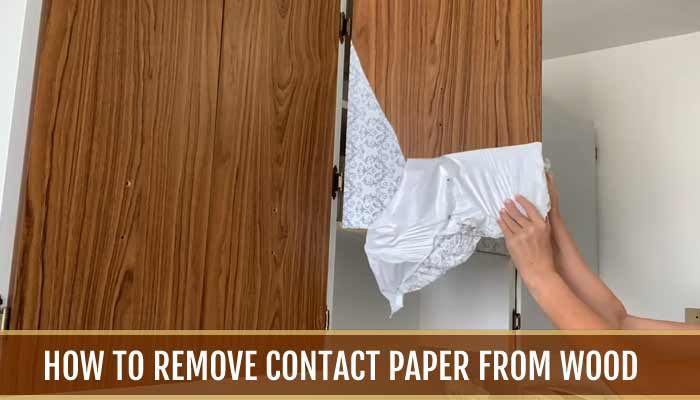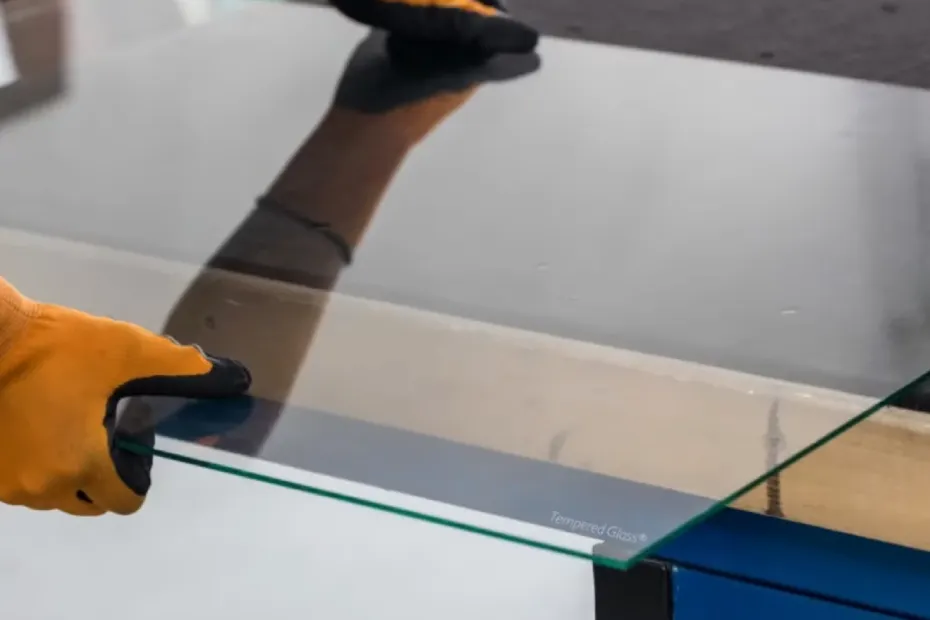WoodenuKnow.com is a participant in the Amazon Services LLC Associates Program, an affiliate advertising program designed to provide a means for sites to earn advertising fees by advertising and linking to Amazon.com and may earn from qualifying purchases.
You might think that once you peel off the contact paper, you’re done. In fact, this is one of the biggest misconceptions about removing contact paper from wood. Removing contact paper from wood can be a bit tricky, especially when it comes to getting rid of the adhesive residue.
However, with persistence and patience, you can often succeed in removing most, if not all, of the adhesive without causing any damage to the furniture.
Here Are 3 Tips for How to Remove Contact Paper from Wood:
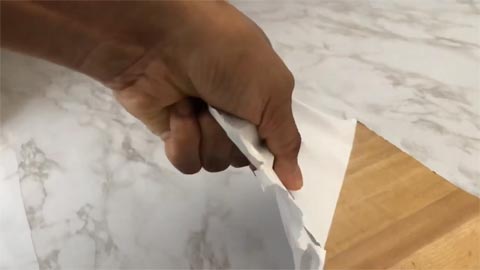
1. Pull Back the Adhesive and then Heat It with a Hair Dryer
Adhesives are designed to stick and therefore have a strong grip. If you simply try to peel off the contact paper, it will likely leave behind some tape residue that resists your efforts.
However, by heating up this adhesive you can make it more pliable and give you a better chance of removing it.
It is recommended to use a hairdryer instead of an open flame or torch for this step. This will prevent any potential damages to your wood, such as burning or discoloration.
Begin by placing the hairdryer around the area that has adhesive left behind. Aim it at the area until you notice some of the glue stain sticking to the hairdryer. This should make it easier for you to remove with your hands or a razor blade.
2. Use an Adhesive Remover
Another option is to use wood glue remover on this sticky residue, which will help dissolve and loosen up the adhesive.
One example of this is Goo Gone, which can be sprayed directly on the sticky surface and then wiped up with a cloth or paper towel.
This should help with any remaining adhesive that may not have been removed by your initial efforts. It is recommended to try one method at a time and see if that works before using sticker residue.
3. Use a Razor Blade to Scrape the Residue Off
If your first two methods didn’t work, you can try using a razor blade or putty knife to scrape off as much of that remaining residue as possible before applying shelf liner adhesive remover or heat from a hairdryer again.
This should help you save some money on adhesive removers and get your furniture looking great again.
Be careful when using a razor blade to avoid damaging the wood surface with too much pressure or cutting into it.
It may be helpful to tape over any areas of the wood that you don’t want to cut or damage and only apply slight force when scraping off pieces of adhesive, rather than using a lot of pressure.
Once you’ve removed as much of the adhesive as possible, you can then follow up by reapplying some adhesive remover if necessary or using heat to try loosening any remaining pieces.
It may take some time and patience, but with these tips, you should be able to have your contact paper-covered wood looking clean and tidy again.
Why You Should Be Removing Contact Paper from Wood?
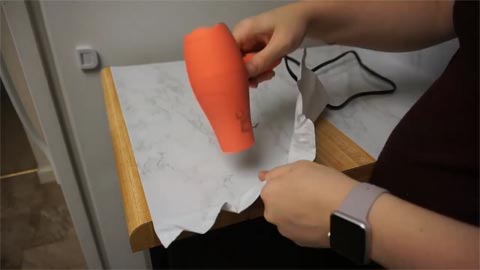
Just because you can easily peel the contact paper away from the surface of the wood, doesn’t mean it’s going to be easy to remove.
The shelf liner adhesive on the back of the contact paper is very strong and will often leave residue behind. The duct tape glue’s strong grip might make it difficult to remove without leaving anything sticky behind and can also cause more damage to your furniture.
Not only does it leave a sticky mess but it also may tear up any loose fibers on your furniture while removing.
It’s possible that these are some reasons why you don’t want to have the contact paper on your wood surfaces:
Messy
Leaving a layer of adhesive behind as well as other sticking substances which can ruin your wooden surface.
Difficulty
Taking hours to get the contact paper removed and leaving your hands sore and raw.
Damages
Tearing up any fibers on your wood surfaces as you peel them away can leave an unappealing look.
In order to avoid any of these problems, there are several ways that you can remove contact paper from wood and clean up by using baking soda, mineral spirits, rubbing alcohol for the sticky glue residue left behind.
What Are the Advantages of Removing Contact Paper from Wood?
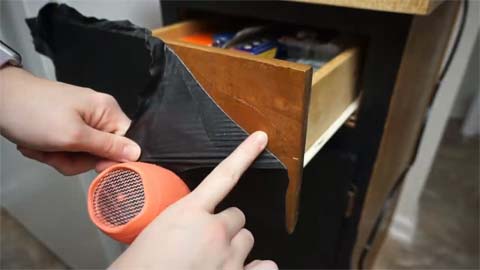
There are many advantages to removing contact paper from wood. The adhesive on the back of the contact paper leaves a sticky, gooey mess and can also cause damage to the wood.
It may be a better option to remove the contact paper before it even sticks to the wood. This will help the contact paper from tearing up any loose fibers on your furniture that might fall off as you peel it away.
Another benefit of removing the shelf paper adhesive is that you don’t have to deal with expensive shelf liner adhesive residue which can sometimes leave stains behind and only work on certain types of adhesives.
Below are just some of the many advantages that you will find with removing contact paper from wood:
- Save money by not having to go out and buy a new piece of wood.
- Save time because you won’t have to wait for a professional to come out.
- Gain a better appreciation for the craftsmanship of your furniture by restoring it properly.
- Remove unsightly, a nail polish adhesive that has left your furniture a mess.
- No longer have to look at unsightly bubbles on your wall or desk.
- Be environmentally conscious by not wasting an old piece of wood.
- Reduce landfill waste by recycling your old furniture.
- Avoid all possible health consequences that may result from contact with hazardous chemicals.
- Remove contact paper from wood without having to climb on a ladder!
Summary
Removing contact paper from wood can indeed be a tricky task, as the adhesive used on the back of the contact paper tends to leave behind residue when peeled off.
However, if you’re facing difficulties or need further guidance on how to effectively remove contact paper from wood, don’t hesitate to seek assistance. Feel free to reach out for help or more information on the proper methods of removing contact paper from wood.

